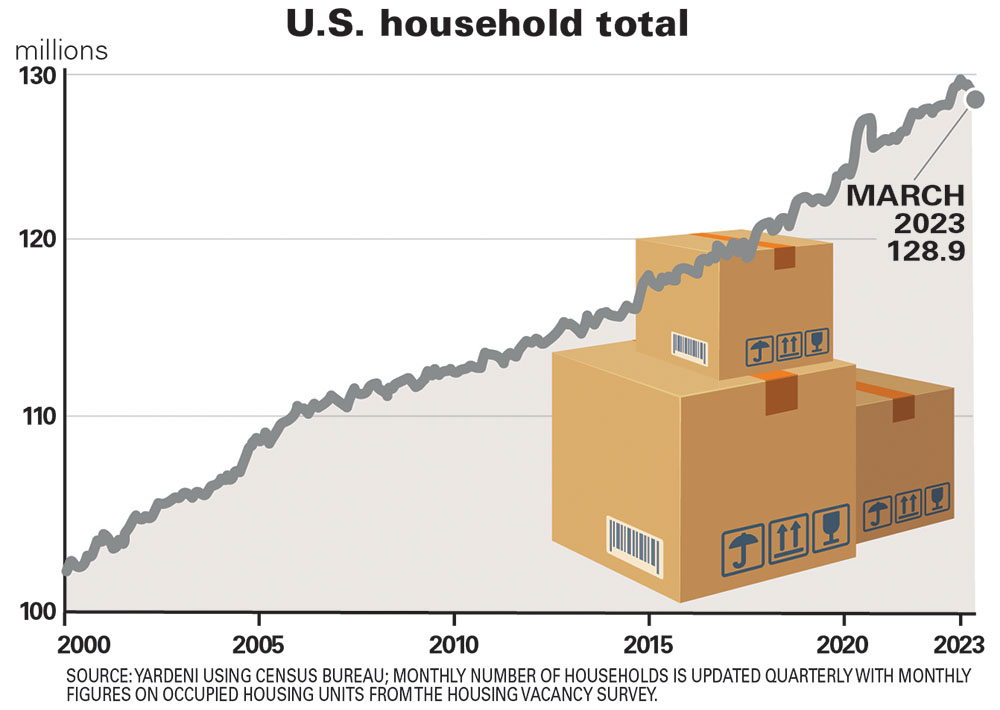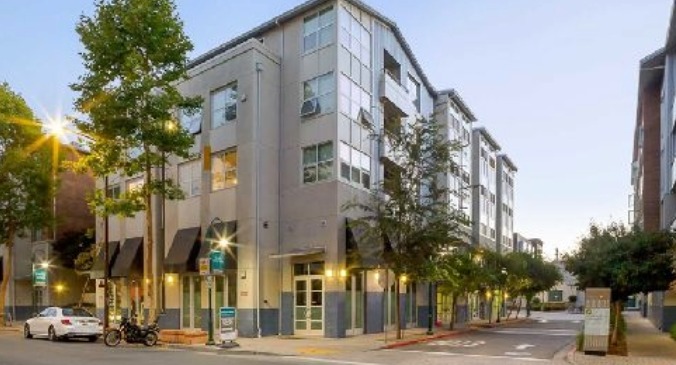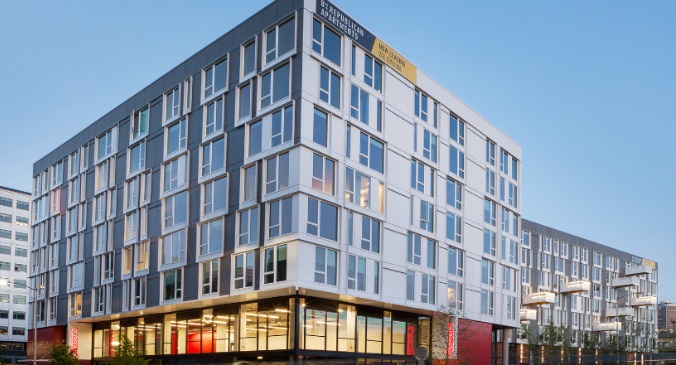New research suggests one driving factor for the rise in new household formation: People got sick of living with each other.
Unsurprisingly, when people are forced to convert their homes into home-office-gym-bars, they feel a striking urge for more space. The widespread adoption of remote work gave many people the chance to abandon expensive, dense places for cheaper locations in the suburbs or other parts of the country.
But this shift also led to stark changes within big cities: People struck out on their own or broke into smaller units. Recent college grads decided to move out of their parents’ houses, roommates ditched their cramped quarters for places of their own, and couples broke up and got separate places. In aggregate, these kinds of decisions created thousands of home hunters, all jostling for a relatively fixed number of units.
The significant increase in household formation provided a counterbalance to the pandemic exodus, a new analysis from the bipartisan Economic Innovation Group found, and kept housing demand in big cities such as New York or San Francisco from falling off a cliff. It also underscored the need for more construction in these areas: With more people elbowing each other for places to live, the only way for cities to continue growing and lower the cost of living is to find somewhere to put everyone.
Competing forces in inner core
When millions of workers went remote earlier in the pandemic, it opened up a world of possibilities—and life-changing decisions.
Many people who lived in big cities decided it was their chance to move to cheaper, less crowded markets where they could get more bang for their buck. Others decided to remain in the city but split up from roommates and started hunting for a studio. Still others used their stimulus checks and pandemic savings to upgrade from a one-bedroom to a two-bedroom. When millions of people around the country weigh these kinds of options, a shock to the housing market is inevitable.
“Every time I write a remote-work paper, I say, ‘All right, that’s the last one. It’s time to move on to other topics,’” Adam Ozimek, the chief economist at the Economic Innovation Group and a coauthor of the latest paper, said. “And then every time I do it, I think of something new.”
In this case, Ozimek and his coauthor, Eric Carlson, used heaps of 2021 census data to illustrate how housing markets in large cities were caught between two powerful, competing forces. The first was outbound migration, which led to weaker housing demand in city centers. Previous work by Stanford researchers Arjun Ramani and Nicholas Bloom found there was a “donut effect” earlier in the pandemic, in which housing demand fell in dense urban areas as people moved to the surrounding residential areas and suburbs.
Between July 2021 and June 2022, New York City lost a net 194,000 residents to migration, while Los Angeles lost 109,000, Chicago lost 88,000, and San Francisco shed about 20,000, an analysis of census data by John Burns Research and Consulting found. In the case of New York City, EIG’s latest analysis of data from the U.S. Postal Service confirmed there hadn’t been a subsequent surge in people moving back to the city.
Instead, the sudden flight to the burbs was counteracted, Ozimek and Carlson said, by an equally startling surge in household formation. A household refers to any group of people living together in one unit—a family of five in a suburban home counts as one household, as does a group of three roommates living in an urban apartment. If those three roommates move out and each gets a one-bedroom unit, the net effect is two additional households.
Before the pandemic, U.S. household formation was on the decline. Between 2010 and 2020, the increase in the number of households was the lowest on record, an analysis by Pew Research Center found. Slow population growth and an increase in the number of adults living with their parents, perhaps as a result of the economy’s choppy recovery, meant there were fewer people striking out on their own. That changed shortly after the pandemic —household formation jumped to 2.5 percent nationally in 2021, more than double the fastest rate since the Great Recession.
This surge in household formation caused an increase in the “extensive margin of demand”—essentially, the total number of housing units that a given population desires.
But EIG’s latest paper goes one step further, saying there was also an increase in the “intensive margin,” or the size and quality of units that people demand. Put another way, remote work led to an increase in the number of people wanting not only places of their own but also bigger homes. A couple might seek to upgrade from a one-bedroom to a two-bed, or they might look for a one-bedroom with more square footage. This desire to trade up is evident in the rent payments of people who shifted to remote work: Becoming a remote-work household in 2021 was associated with a 20 percent increase in rent payments, or about a $500 increase each month, the EIG researchers found.
Of course, those effects weren’t felt equally everywhere. To return to the “donut” analogy, the hole in the center—the most densely populated, expensive part of a metropolitan area —was likely to lose population as a result of more people working remotely. But it was also more likely to see a greater increase in household formation.
“Part of that is probably because housing markets become relatively more affordable in those areas,” Ozimek said. “People leave and so you have vacancies, and people take that opportunity created by the vacancies to form new households. So it’s one of the ways in which the housing market is reacting to the opportunity created by population loss.”
While people were able to snag some early pandemic deals due to the outbound migration, the surge in household formation meant rents in many of these center city areas quickly snapped back. Consider San Francisco, where the median rent within city limits in September had rebounded to a little more than $3,500, down just 2 percent from the same point in 2019, according to Zillow’s data. Or look at New York City, which, as Ozimek and Carlson point out, lost 2.9 percent of its population between 2019 and 2021 but has seen real rents increase since the start of 2021. Washington, DC, lost 20,000 people, or nearly 3 percent of its population, between April 2020 and July 2021, according to census data. But by the third quarter of 2021, the apartment-vacancy rate, excluding newly built units, had fallen below pre-pandemic figures, according to data from Delta Associates.

Rental housing’s next phase
The rental market is now in the middle of another shift as higher interest rates squeeze consumers at every turn. Demand for apartments has been sluggish this spring, the latest report from Apartment List said, and an influx of newly constructed units is keeping rent growth in check. In 40 of the nation’s 100 biggest cities, including Austin, Texas, and Washington, D.C., the median rent in April was down from the previous year.
“High house prices, high rents, and rising interest rates are probably pushing back against household formation,” Ozimek said. A recent report from Redfin acknowledged as much, pointing to slowing household formation as one of the reasons that the median asking rent hit its lowest point in 13 months. Unlike the early months of the pandemic, roommates may now eye the rental market and decide it’s more financially prudent to stick together rather than test the waters on their own.
But even if more people start bunking up again, that doesn’t change the fact that we’ll need more housing units to catch up with growing demand. More than 971,000 apartment units were under construction across the U.S. at the end of 2022, the second-largest number on record. Roughly 575,000 are scheduled to be completed this year, according to RealPage, a real-estate-software company. That’s encouraging, but it won’t be enough. Households, EIG’s research found, are likely to demand more space per person as remote work becomes entrenched or even expands. If more employees keep adopting remote work—which is a big “if”—that indicates housing demand is bound to increase.
In this case, though, Ozimek is optimistic. The immediate shocks we’ve seen over the past few years are bound to smooth out, he said, once supply has time to catch up to these rapid changes in demand.
“In the short run, we’re dealing with a lot of imbalance between supply and demand,” Ozimek said. “Household formation is one of the things that’s increasing demand. But in the long run, we should have supply help bring things back into balance.”
Excerpt James Rodriguez. Business Insider















